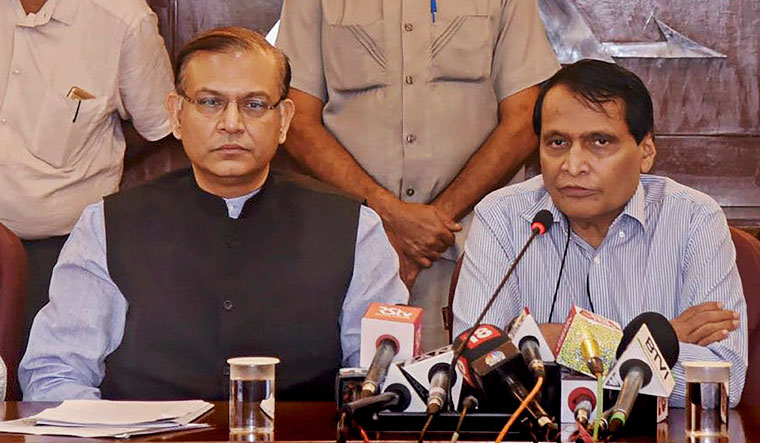A pre-determined tariff plan for all upcoming private airports was released on Tuesday. The new policy comes at a time when more airports are expected to be operational, especially with rising air passenger traffic and infrastructure woes ailing the existing major airports.
The new airport tariff proposal seeks to cap the maximum yield any private greenfield airport could collect per passenger, and sets out the roadmap for the kind of financial assistance any airport developer can expect from the government.
Earlier, at the start of the monsoon session of Parliament in July, the government had moved amendments to the Airport Economic Regulatory Authority (AERA). These amendments paved the path for having a new structure for airport tariffs and change the definition of major airports.
"The new tariff structure will ensure that future airports in India are simple, functional and cost-efficient," said Suresh Prabhu, minister for commerce & industries and civil aviation, while releasing the new airport tariff proposals.
Prabhu said he believes that the new capped airport tariff structure would also put an end to controversies and litigation involving private airport concessions in the country so far.
The new pre-determined tariff structure would be fixed at the very beginning of the 40 year concession period fixed under this policy, by the concession authority of the ministry of civil aviation.
Currently, there is a cost plus tariff structure wherein the rates for an airport are determined every five years, which is known as the concession period.
The new policy is part of Arun Jaitley's Union budget proposal this year to expand the capacity of our airports by five times to have a billion air trips a year under the government initiative of NextGen Airports for Bharat (NABH Nirman).
For the current year, the government has fixed a revenue of Rs 400 per passenger.
"The number is arrived on the basis of projected cash flow analysis of various greenfield airports and a review of different aeronautical yields at Indian and global airports in the recent past," a ministry note on the new tariff policy proposal read.
"Bidding dates for the new greenfield airports will be announced soon. We expect the bids to differ for each airport in line with their projected traffic, financial returns and risk profile," said Rajiv Nayan Choubey, secretary, Union ministry of civil aviation.
The proposal recommends to index the per passenger revenue and concession fees to 50 per cent of inflation, after a three-year moratorium from the date of operation of the airport, the proposal said.
The airport concessionaires would also be eligible to seek tariff revision after a period of five years, again to be determined on the basis of their revenue inflows and inflation.
Under the new airport concession policy, state authorities too would have a say in fixing the per passenger rate of revenue over a period of five years. “This is expected to attract more investors and funding for our upcoming greenfield airports at Jewar, Bhogapuram and Pune,” said Prabhu.
The proposed transaction structure for greenfield airports would be circulated for public consultation till August 28. The government promised to finalise the policy only after receiving their feedback and amending them to the proposed airports' tariff policy.
Wide variations in airport tariff create challenges for domestic and foreign airlines who have to recover the same from passengers, Guruprasad Mohapatra, chairman, Airports Authority of India (AAI), which manages about 120 airports in the country said.
Many domestic, as well as global investors and lenders, have highlighted this variation in tariffs as one of the key reasons for staying away from investing in India, despite the country projected to be the fastest growing aviation market in the world.
At present, the cost plus tariff structure involves a long drawn tariff determination process every five years with adjustments on annual basis. Many of the regulator's decisions are legally challenged by private operators, resulting in a waste of time, energy and money.
India's domestic aviation sector has been growing significantly, with air passenger traffic registering double-digit growth (16-18 per cent) for the last three years. The country is expected to be the biggest aviation market in the world by 2032.


